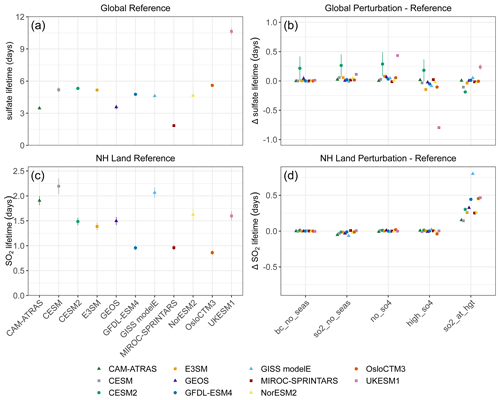2024-02-22 パシフィック・ノースウェスト国立研究所(PNNL)
<関連情報>
- https://www.pnnl.gov/publications/snow-droughts-are-not-solely-driven-abnormal-snowfall-and-temperature
- https://agupubs.onlinelibrary.wiley.com/doi/full/10.1029/2023JD039308
1980~2014年の地球システムモデルシミュレーションとERA5陸域データにおける北半球の雪旱魃 Northern Hemisphere Snow Drought in Earth System Model Simulations and ERA5-Land Data in 1980–2014
Yilin Fang, L. Ruby Leung
Journal of Geophysical Research Published: 02 December 2023
DOI:https://doi.org/10.1029/2023JD039308

Abstract
Low snow levels over the past few decades and predictions of a low-to-no snow future have spurred research into snow droughts, which pose a threat to water security and management. Systematic data-model comparisons of snow drought have been lacking, hindering our understanding of the drivers of snow drought in the past. To address this gap, we analyzed snow drought events using standardized snow water equivalent index derived from monthly results of four numerical experiments using the E3SM Land Model (ELM) and ERA5-Land data during the period of 1980–2014. Additionally, we compared snow drought duration calculated from models with those from the ERA5-Land data during selected El Niño-Southern Oscillation (ENSO) years. The numerical experiments were conducted with ELM driven by two prescribed atmospheric forcings, and with the coupled land-atmosphere configuration of E3SM with and without plant hydraulics scheme feedback. Analysis reveals that 20%–30% of snow droughts occur due to factors other than above-normal temperature and low snowfall, such as low soil moisture, warm soil temperature, and low relative humidity, etc., especially in high latitudes (50° North). Furthermore, our study highlights the exacerbating effect of ENSO events on snow drought conditions in various regions, despite some discrepancies between model and ERA5-Land results. We also identified limitations of the coupled land-atmosphere models in our current configuration in capturing the spatial patterns of snow droughts. This study underscores the challenge of predicting and mitigating snow drought and the need for a comprehensive understanding of the factors contributing to snow drought.
Key Points
- Snow droughts in Northern Hemisphere land are predominantly driven by low snowfall, warm temperature, or both
- However, 20%–30% of snow droughts are driven by factors such as anomalous soil moisture and temperature
- El Niño-Southern Oscillation events can exacerbate snow drought conditions in various regions, despite some discrepancies between model results
Plain Language Summary
The decrease in snow levels over the past few decades and predictions for future snow droughts threaten water security and management. While there are various observational data products and model simulations available, a comparison between them has been lacking. This study conducted a comparison between different numerical experiments using the Energy Exascale Earth System Model and reference data from ERA5-Land to understand the drivers of snow droughts in 1980–2014. The findings revealed that factors other than above-normal temperature and low snowfall, such as low soil moisture, warm soil temperature, and low relative humidity, etc., can also contribute to snow droughts. The study also highlights the exacerbating effect of ENSO events on snow drought conditions in various regions. However, there are some discrepancies between the models and ERA5-Land data, which may be attributed to factors such as model resolution, parameterization, and uncertainties in forcing data. The study underscores the complexity of predicting and mitigating snow drought and the need for a comprehensive understanding of the factors contributing to snow drought.



